Now let’s take the block apart:
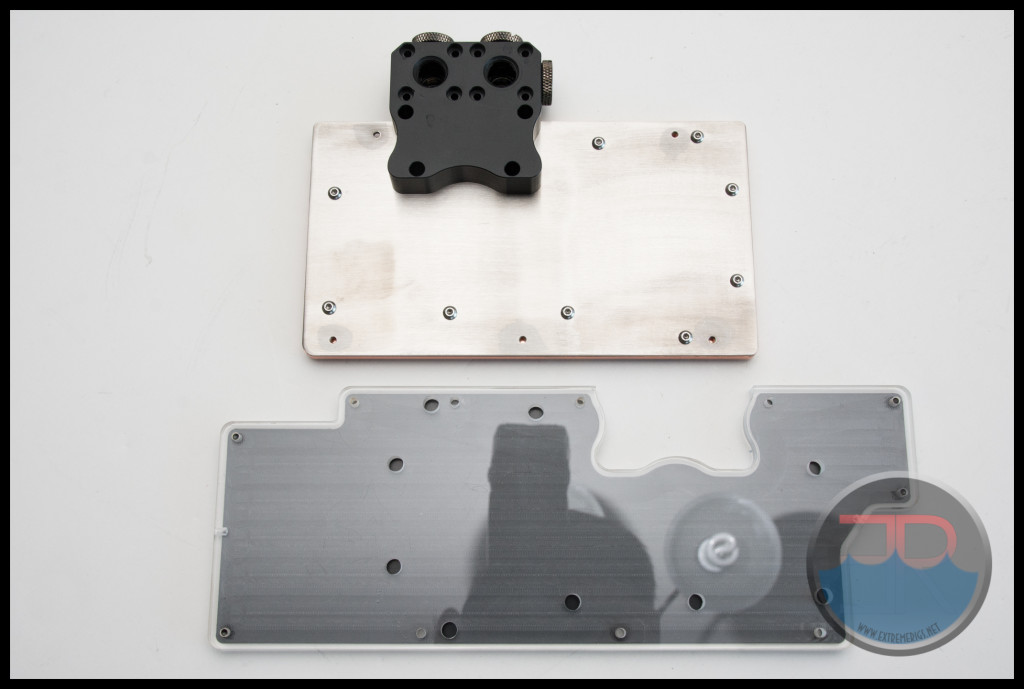 As mentioned before the brushed aluminum plate and acrylic is purely aesthetic and once removed the meat of the block is revealed. It’s a slim piece of copper sealed with a stainless steel plate:
As mentioned before the brushed aluminum plate and acrylic is purely aesthetic and once removed the meat of the block is revealed. It’s a slim piece of copper sealed with a stainless steel plate:
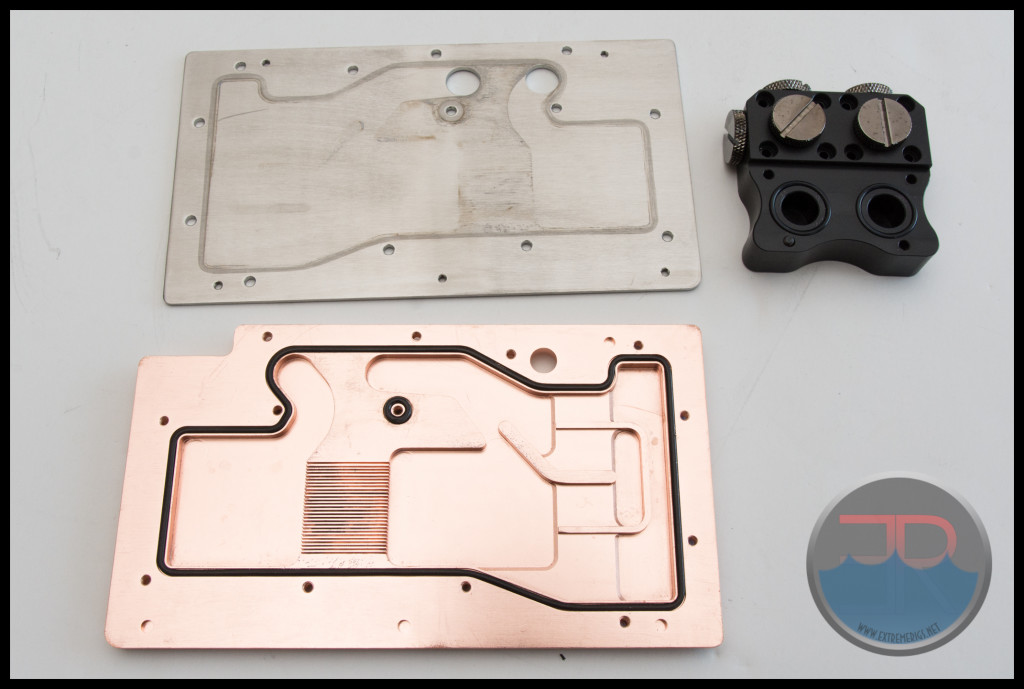 The generic design is similar to previous designs. This is not a surprise as XSPC cooling engine won the Titan roundup and only performed poorly on the 290 because of poor contact. The block itself has some marks:
The generic design is similar to previous designs. This is not a surprise as XSPC cooling engine won the Titan roundup and only performed poorly on the 290 because of poor contact. The block itself has some marks:
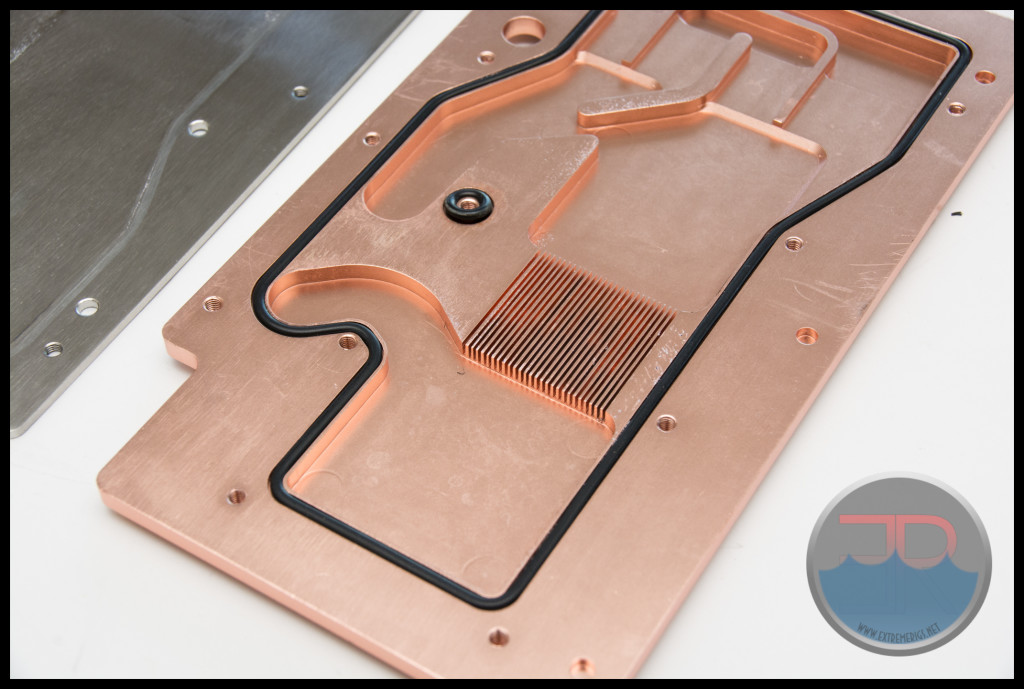 and you can see from some white marks (detritus) that coolant does still flow over some of the raised sections. It’s hard to show just how slim the copper is:
and you can see from some white marks (detritus) that coolant does still flow over some of the raised sections. It’s hard to show just how slim the copper is:
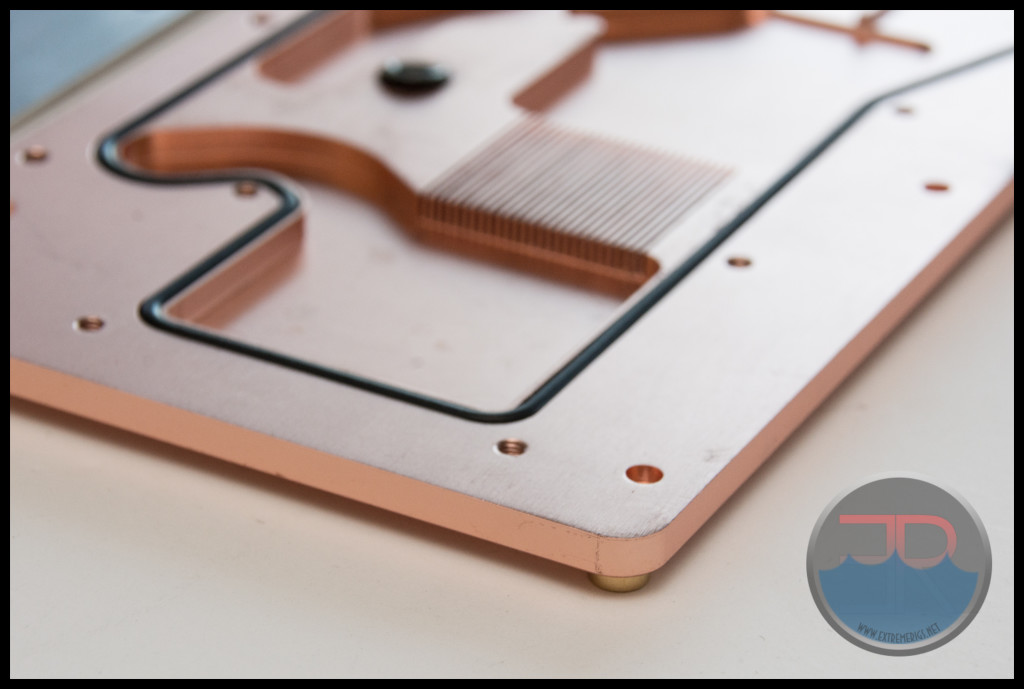
Onwards to testing!








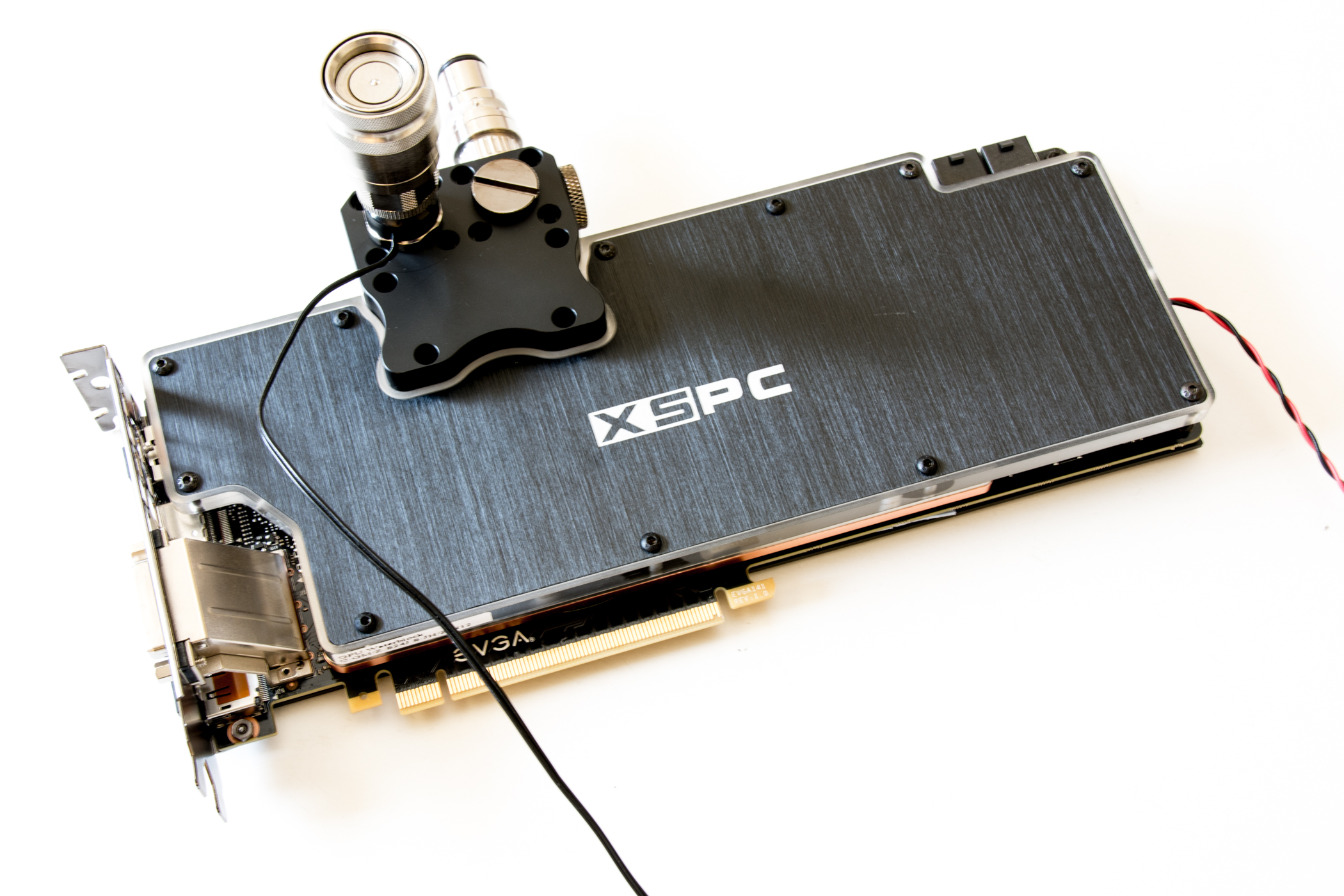



Wait, aren’t you supposed to put washers *under* the back plate?
Well that’s the interesting thing – the backplate doesn’t come with instructions so it wasn’t clear. I’m used to a methodology that a washer gets inserted between the part that can turn and the part that is fixed e.g. between the screw and the backplate, or the nut and the pcb etc. So that’s what I default to if the instructions don’t tell me otherwise. In addition putting the washer between the PCB and the backplate means that you have to hold the block and pcb together, align the 10+ washers, then drop the backplate on top without shifting any of the washers. Either it looks ugly with washers out, or it’s hard to mount with washers internal. Looking at the XSPC’s website – it shows the washers in between the backplate and the PCB. I don’t think this affects performance testing at all, but it does negate my aesthetics comments. However I do think the hassle of putting them under the backplate is a negative so the overall rating would be the same even if the points shift from one category to the next!
[…] XSPC XS-GTX-980 Review – XSPC’s GTX 980 Razor Water Block & Backplate […]
Comments are closed.